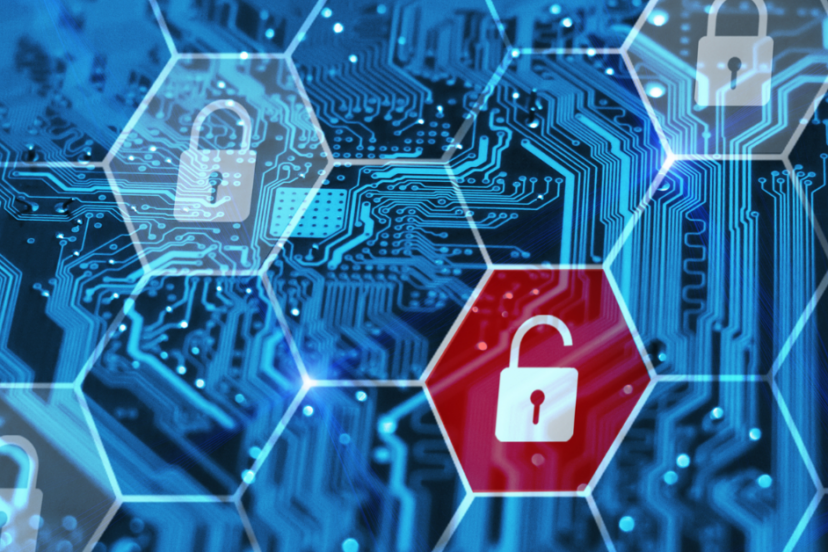AI and Cybersecurity: A Double-Edged Sword
AI’s dual function in cybersecurity is a fascinating challenge in technology. Modern technology’s miracle, artificial intelligence, is becoming more vital. It’s changing our interactions with chatbots and driverless vehicles. It’s about outwitting adversaries and protecting our digital world. AI is vulnerable to harmful attacks despite its prowess. Thus, AI protects and preys on the cybersecurity ecosystem, presenting a fascinating dilemma.
Today’s blog, “AI and Cybersecurity: A Double-Edged Sword,” explores how AI improves cybersecurity while simultaneously creating new threats. To unravel this story, we’ll examine AI-enabled threat detection, vulnerability assessment, adversarial attacks, and secure AI model training.
So buckle up and join us on this dynamic, contradictory ride in AI and cybersecurity. Will this double-edged sword make us vulnerable or help us? Let’s investigate!
AI As a Tool for Enhancing Cybersecurity
AI (Artificial Intelligence) has emerged as a powerful tool for enhancing cybersecurity measures across various industries and sectors. Its ability to analyze massive data, detect patterns, and adapt to evolving threats makes it an invaluable asset in safeguarding digital assets and information.
Proactive Threat Detection
One of the primary ways AI enhances cybersecurity is through proactive threat detection. Unlike traditional systems that often react to breaches after they occur, AI can anticipate and flag potential threats before they happen. Machine learning algorithms can learn from previous cyber-attack patterns and use this knowledge to predict and prevent future attacks.
AI-enabled Threat Intelligence
AI can sift through massive volumes of data to detect anomalies and potential threats, enabling organizations to prioritize and respond effectively. AI systems can turn raw data into actionable intelligence through machine learning and data analytics, dramatically improving threat detection and response times.
Vulnerability Management
Every day, new vulnerabilities are discovered in various software, and keeping track of them can be overwhelming. Here, AI can automate the process of vulnerability management. It can scan systems to identify known vulnerabilities, rank them based on risk, and sometimes even patch them automatically.
Incident Response
When a security incident occurs, speed and efficiency are of the essence. AI can help automate parts of the incident response process, such as identifying the breach, isolating affected systems, and executing predefined mitigation steps. By doing this, AI reduces the time it takes to respond to a breach, minimizing potential damage.
User Behavior Analysis
AI algorithms can learn typical user behavior patterns and identify deviations, such as a usually active user trying to access the system at an odd hour. Such deviations can indicate a potential security threat, like a stolen identity or unauthorized access.
AI as a Potential Target for Malicious Attacks
However, the relationship between AI and cybersecurity is not all roses. The irony lies in that the very tool we use for defense can become a target. Adversarial attacks on AI systems pose a new frontier for cyber threats.
Adversarial attacks on AI
Imagine having a brilliant teammate who, once tricked, starts working against you. That’s what an adversarial attack on an AI system looks like. By manipulating inputs cleverly, attackers can cause AI systems to make mistakes, turning our smart ally into a potential liability.
Implications of such attacks
The consequences can be severe. If the AI in a self-driving car is misled into misinterpreting a stop sign for a speed restriction sign, the results could be disastrous. The stakes are high, and these risks increase as AI systems become more ubiquitous.
Secure AI model training
Therefore, focusing on the secure training of AI models becomes critical. This means ensuring the models are trained securely, using reliable data and algorithms.
The Importance of Secure Training in AI
Secure training in the context of AI is paramount for maintaining the integrity, reliability, and effectiveness of AI systems, particularly in sensitive areas like cybersecurity. It ensures the environment, data, and algorithms used in the training process are robust, reliable, and secure from potential threats. Let’s delve deeper into why secure training is so important.
1. Protection Against Adversarial Attacks
Adversarial attacks involve inputting malicious data to trick AI systems into making incorrect decisions. Securely training AI models can equip them to identify and deal with these attempts at deception. If an AI model is not trained securely, it could be vulnerable to such attacks, leading to severe consequences, especially in critical applications like self-driving cars or cybersecurity systems.
2. Ensuring Data Integrity
Data is the lifeblood of AI systems – the quality and integrity of data directly impact the effectiveness of the AI model. If the training data is manipulated or tampered with, the AI model might learn from incorrect or biased data, leading to flawed decisions or actions. Secure training ensures that the data is accurate, relevant, and interference-free.
3. Maintaining User Trust
In today’s increasingly digital world, users must trust that the AI systems they interact with are secure and reliable. If an AI system is known to have been trained in a secure environment, it boosts user trust and acceptance. Conversely, any breaches or failures can lead to a significant loss of user trust.
4. Compliance with Regulations
Regulations around data security and privacy are becoming more stringent across the globe. Secure training of AI models helps ensure compliance with these regulations, avoiding legal complications and potential penalties.
5. Robust Performance
Secure training ensures that AI models perform effectively and consistently, regardless of their environment. It also helps the model generalize better, meaning it can perform well even in scenarios not encountered during training.
Best Practices for Secure Training in AI
Secure AI model training is critical to ensure the robustness and reliability of these systems. Below are some best practices that can enhance the security of AI training:
Rigorous Data Validation:
One of the initial steps towards secure training is validating the data used. This involves checking the data for accuracy, consistency, and relevance. Any errors or anomalies in the data should be rectified before being fed into the AI model.
Data Anonymization:
Data anonymization should be applied to comply with privacy laws and protect sensitive information. This process involves removing identifiable information from the data, ensuring individuals’ privacy while retaining the data’s utility for training purposes.
Robust Encryption Methods:
Data and models should be encrypted both at rest and in transit. This can prevent unauthorized access and the data and models from being tampered with.
Regular Audits:
Regular audits of the training process, data, and resulting model can help identify any vulnerabilities or issues. Alao audits should include reviewing the model’s performance to ensure it’s behaving as expected.
Defense Against Adversarial Attacks:
Training the model to recognize and defend against adversarial attacks is crucial. This can involve adversarial training, where the model is trained with adversarial examples to make it more robust.
Limiting Access:
Access to the data and AI models should be limited to those who need them. Implementing strong access controls can prevent unauthorized access and potential manipulation.
Continuous Monitoring:
Continuous monitoring can help detect any security threats or breaches in real time. Any anomalies or deviations from the expected behavior should trigger alerts for immediate investigation.
Use of Secure AI Frameworks:
Secure AI training frameworks can provide built-in security measures, helping protect the training process. These frameworks often contain encryption, access controls, and logging capabilities.
Challenges in AI and Cybersecurity
While the intersection of AI and cybersecurity holds considerable promise, it has challenges. Let’s explore some of these challenges and consider the potential future directions in this rapidly evolving field.
Data Privacy:
AI systems require massive training and operation data, often including sensitive information. Ensuring the privacy of this data while still leveraging it for AI is a significant challenge.
Adversarial Attacks:
As AI becomes more prevalent, so do the sophistication and frequency of adversarial attacks. Developing defenses to keep pace with these evolving threats is a significant challenge.
Dependence on AI:
The increasing reliance on AI for cybersecurity could lead to vulnerabilities if the AI systems are compromised. Balancing the benefits of AI with the risks it presents is a crucial concern.
Lack of Explainability:
AI models, profound learning models, are often seen as ‘black boxes’ because their decision-making processes are not easily understandable by humans. This lack of explainability can make it challenging to trust AI systems fully.
Regulatory Compliance:
With data protection laws becoming stricter, ensuring AI systems comply with all relevant regulations can be complicated and resource-intensive.
Future Directions in AI and Cybersecurity
Looking ahead, several exciting future directions could help address these challenges:
Federated Learning:
As a type of machine learning, federated learning allows for distributed, on-device instruction. This approach can help address data privacy concerns as the data no longer needs to be sent to a central server.
Explainable AI:
The goal of explainable AI (XAI) is to develop AI systems whose actions are simple to comprehend by humans. Advances in this area could help build trust in AI systems and aid in their deployment in critical areas like cybersecurity.
AI Ethics Guidelines:
Establishing and implementing AI ethics guidelines can help ensure AI is used responsibly and respectfully, which is particularly crucial in sensitive areas like cybersecurity.
Quantum Computing:
The advent of quantum computing could entirely transform artificial intelligence and cyber security due to the exponential speedup it would bring to data processing and encryption.
As we navigate these challenges, the field continues to evolve, offering exciting opportunities for innovation and improvement. The future of AI in cybersecurity is undoubtedly bright, filled with potential, and ripe for exploration.
Conclusion
As we’ve seen, AI and cybersecurity are complex, double-edged swords. AI protects us from cyberattacks by being awake. It’s our digital superhero, recognizing dangers and vulnerabilities faster than humans can. On the other hand, AI can also be targeted. These robust systems can be misused. Adversarial assaults highlight digital security flaws.
As AI becomes more important in our lives, so does cybersecurity. We cannot ignore either. Our technological and strategic activities should prioritize secure AI model training and adversarial assault defense. We can explore the fascinating world of AI and cybersecurity together. We hold AI’s double-edged sword. Let’s use it wisely!
Let’s engage in the comments below – tell us your thoughts on AI and cybersecurity. Has it helped your field? Were there issues we didn’t cover? Have any topic suggestions?
FAQ’s
How does AI enhance cybersecurity? AI enhances cybersecurity by enabling rapid threat detection and comprehensive vulnerability assessments.
What are adversarial attacks on AI? Adversarial attacks are manipulations designed to trick AI systems into making mistakes, turning them into liabilities.
Why is secure AI model training important? Secure AI model training is crucial to ensure the model’s robustness against potential attacks and manipulations.
What are the challenges in AI and cybersecurity? Challenges include advanced threat detection, preventing adversarial attacks, and ensuring secure AI model training.
What are the best practices for secure AI training? Best practices involve rigorous data validation, robust encryption methods, and continuous monitoring for potential breaches.





Comments are closed.